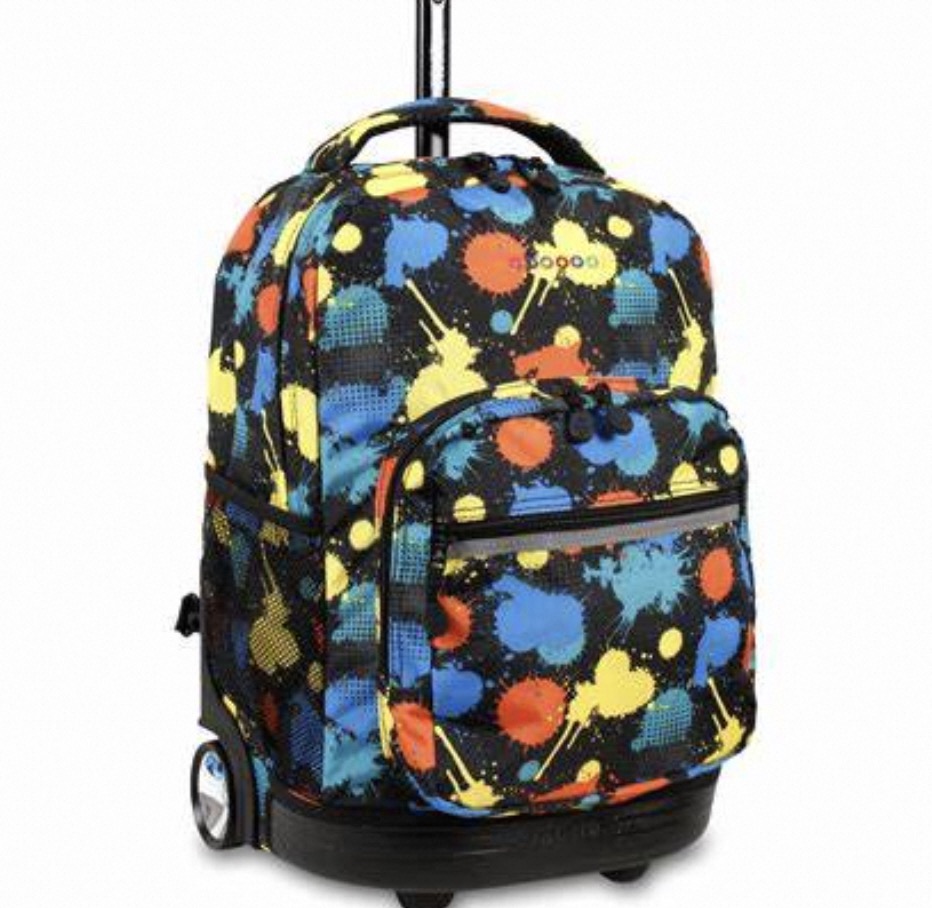Introduction
As students around the world continue to bear the burden of heavy textbooks and educational materials, the introduction of rolling school bags has emerged as a significant development in ensuring their comfort and spinal health. Gone are the days when kids trudged to school, shoulders weighed down by oversized backpacks. Instead, rolling school bags have become a preferred choice for many, combining ease of use with ergonomic benefits. This comprehensive article examines the many facets of rolling school bags, from design to health impact, and why they are increasingly seen as an essential element of a student’s daily life.

I. Anatomy of Rolling School Bags
Rolling school bags are ingeniously designed to alleviate the physical strain of carrying heavy loads, which can lead to chronic back pain and posture issues. They are meticulously crafted to distribute weight evenly, providing a practical alternative to traditional backpacks.
A. Design and Materials
Rolling school bags are typically constructed with a robust, lightweight frame and a telescoping handle to allow for height adjustment. The materials used are often a blend of high-denier fabrics such as nylon or polyester, chosen for their durability and resistance to wear and tear. The base of the bag features a set of smooth-rolling wheels that can navigate various terrains, from school corridors to sidewalks.
B. Compartmentalization and Features
These bags are designed with organization in mind, featuring multiple compartments for books, stationery, and electronic devices. Specialized pockets may include padded sections for laptops or tablets and smaller pouches for pens, keys, and other accessories. Some bags also incorporate reflective elements for visibility and safety, as well as waterproof coatings to protect against the elements.
II. The Ergonomic Benefits of Rolling School Bags
The ergonomic design of rolling school bags is a key factor in their growing popularity. They are specifically engineered to minimize the risk of musculoskeletal problems, which can result from the improper use or overloading of traditional backpacks.
A. Impact on Spinal Health
Carrying excessive weight on the back, especially in growing children, can have detrimental effects on the spine. Rolling school bags circumvent this issue by transferring the burden to the ground through the wheels, thus reducing the load on the back, neck, and shoulders. This design greatly lessens the risk of developing postural issues and relieves the pressure on intervertebral discs.
B. Promoting Proper Posture
By eliminating the need to carry a heavy backpack, students using rolling school bags are more likely to maintain a natural and upright posture. This reduces the likelihood of compensatory behaviors, such as hunching or leaning forward, which can lead to chronic pain and misalignment.
III. Expert Insights on Rolling School Bag
Educational professionals and healthcare providers have weighed in on the benefits of rolling school bags, contributing valuable insights based on years of observation and research.
A. Voices from the Field
Teachers and school administrators have noted a positive change in students who switch to rolling bags, reporting fewer complaints of back pain and improved attentiveness in class. They advocate for the adoption of rolling bags as part of a broader initiative to promote student health and well-being.
B. Medical Professional Endorsements
Pediatricians and orthopedic specialists frequently endorse rolling school bag, particularly for students known to carry heavy loads. By recommending these bags to parents and caregivers, they aim to prevent the development of musculoskeletal issues that can follow children into adulthood.
IV. Practical Considerations for Rolling School Bag
While rolling school bags offer numerous advantages, there are also practical aspects to consider when choosing the right bag for a student’s needs.
A. Selecting the Right Size
Size is an important consideration; a bag that is too large can be cumbersome, while one that is too small may not hold all necessary materials. It is essential to find a balance, ensuring that the bag can comfortably fit everything a student requires without being overfilled.
B. Balancing Functionality and Style
Manufacturers have responded to the demand for rolling school bag that are not only functional but also aesthetically pleasing. Today’s market offers a variety of designs, from bold patterns to sleek, minimalist styles, ensuring that there is a rolling bag to suit every student’s personal taste.
C. Navigating Common Hurdles
Some critics argue that rolling school bag can be difficult to manage in crowded school hallways or on staircases. However, many models now feature convertible functions, allowing them to be carried as traditional backpacks when rolling is not feasible.
V. The Future of Rolling School Bag
With the increasing recognition of the importance of student health and the ongoing innovation in bag design, rolling bags are poised to become an even more integral part of the education experience.
A. Innovations in Bag Technology Manufacturers continue to push the envelope, developing new technologies to make rolling school bags even more efficient and comfortable. Features such as advanced wheel suspension systems and ergonomic handle designs are becoming more commonplace, ensuring that these bags meet the evolving needs of students.

